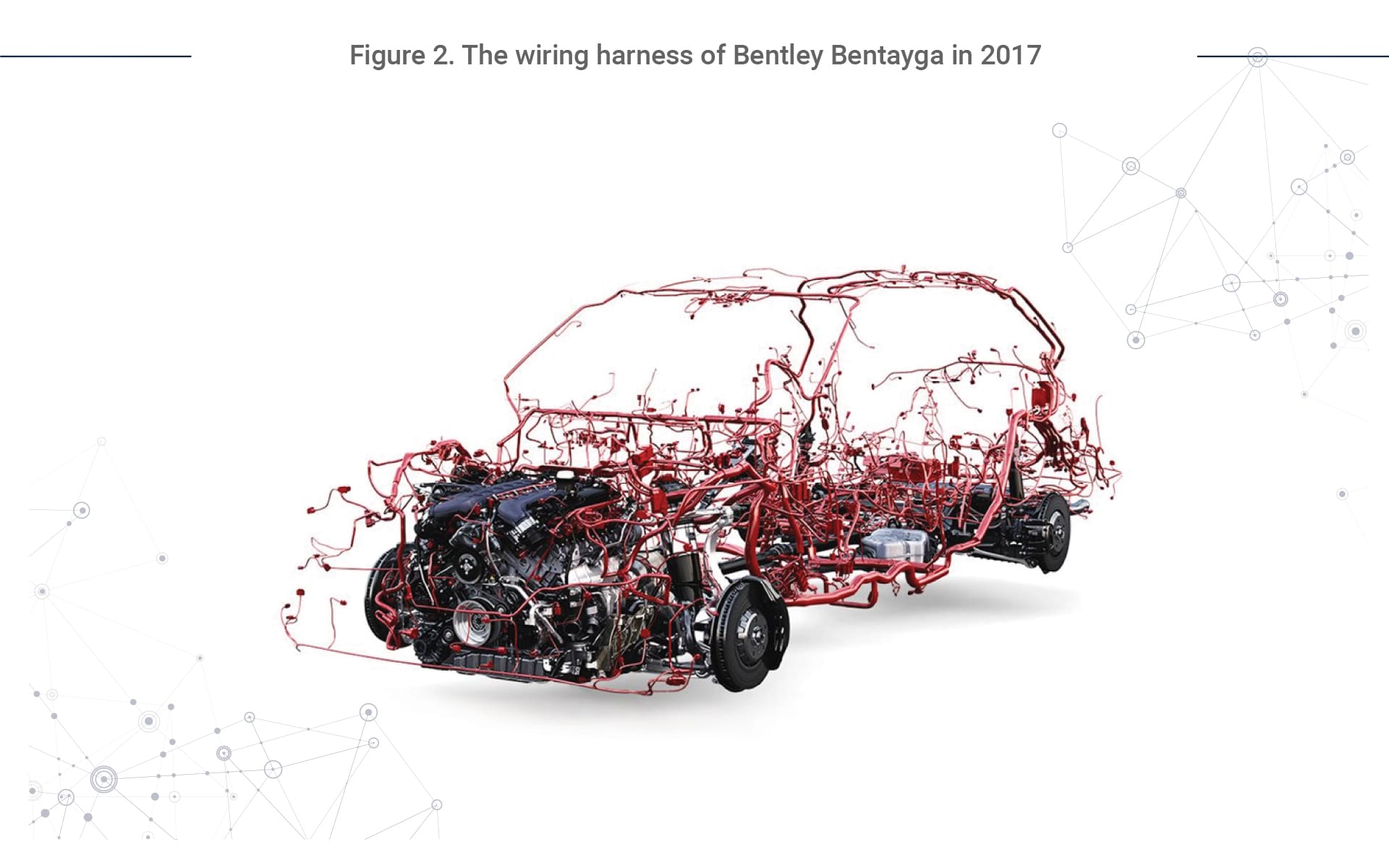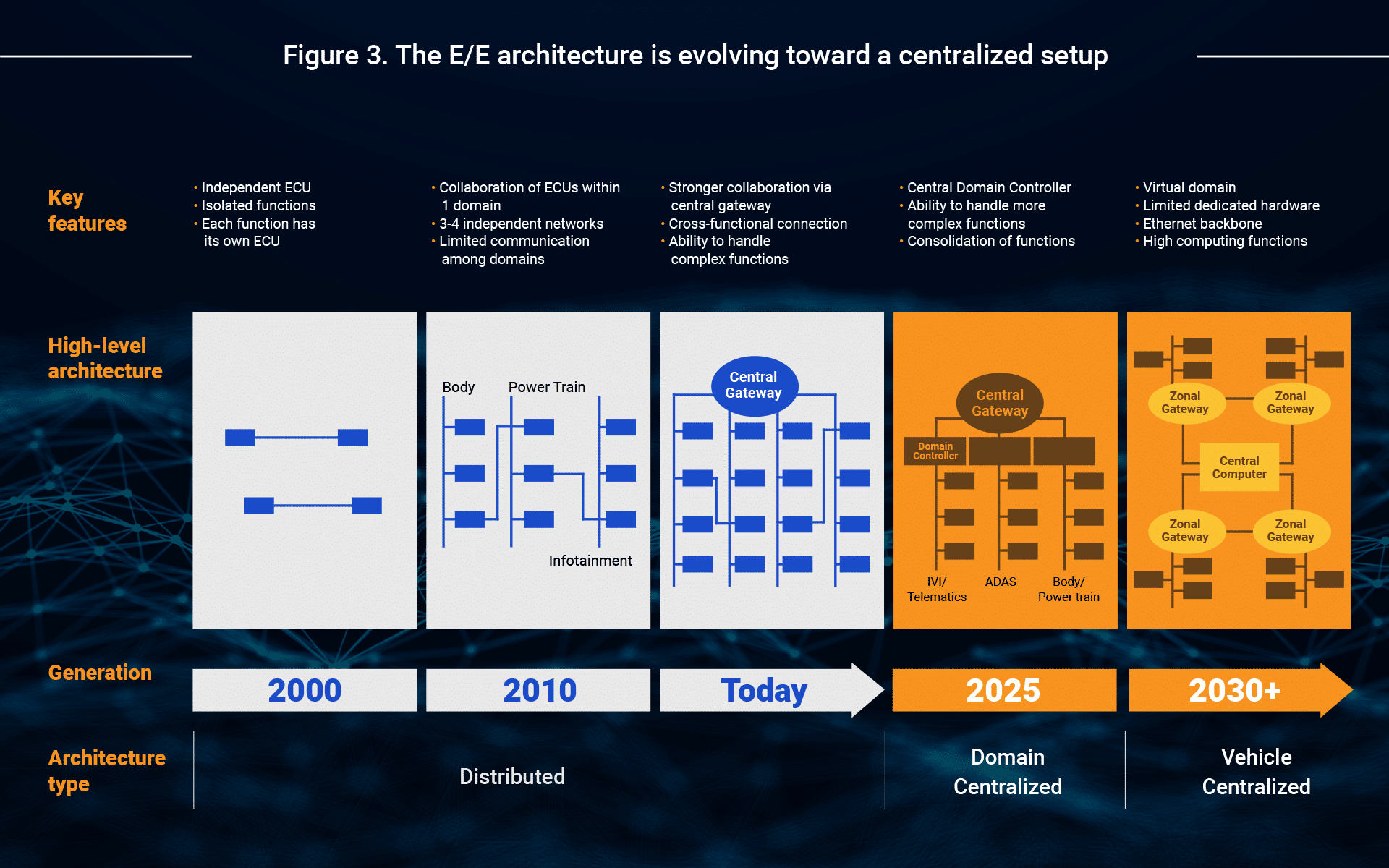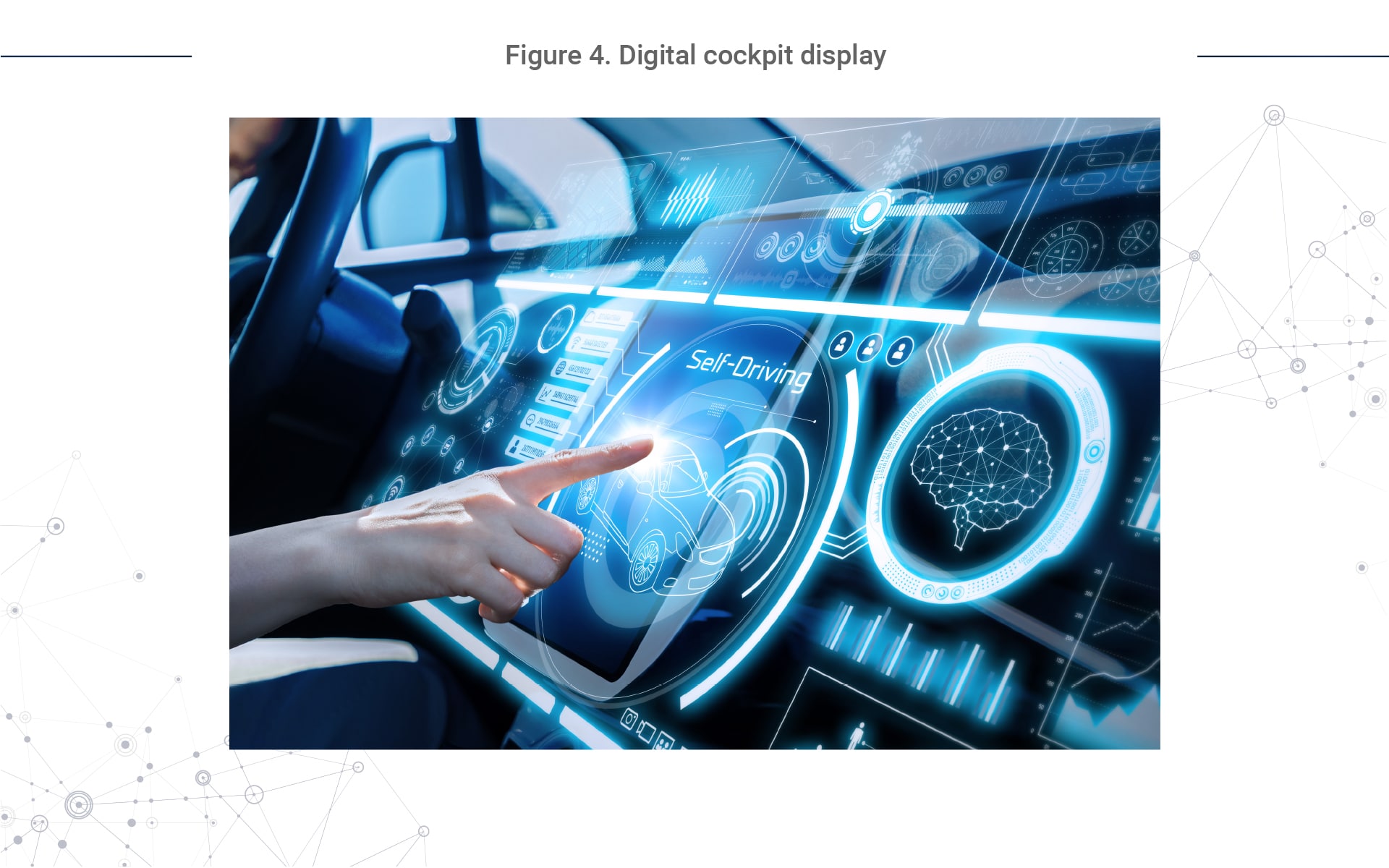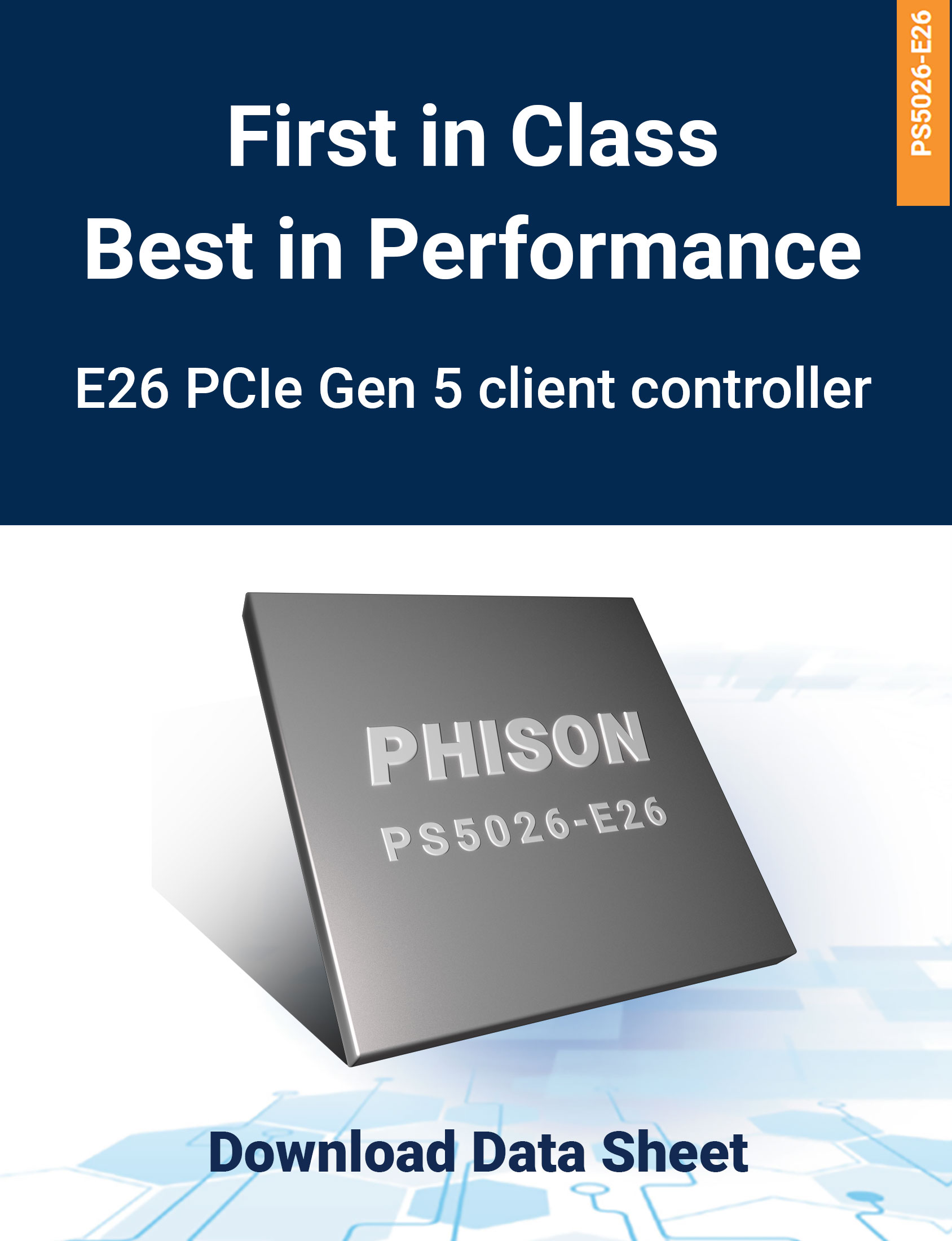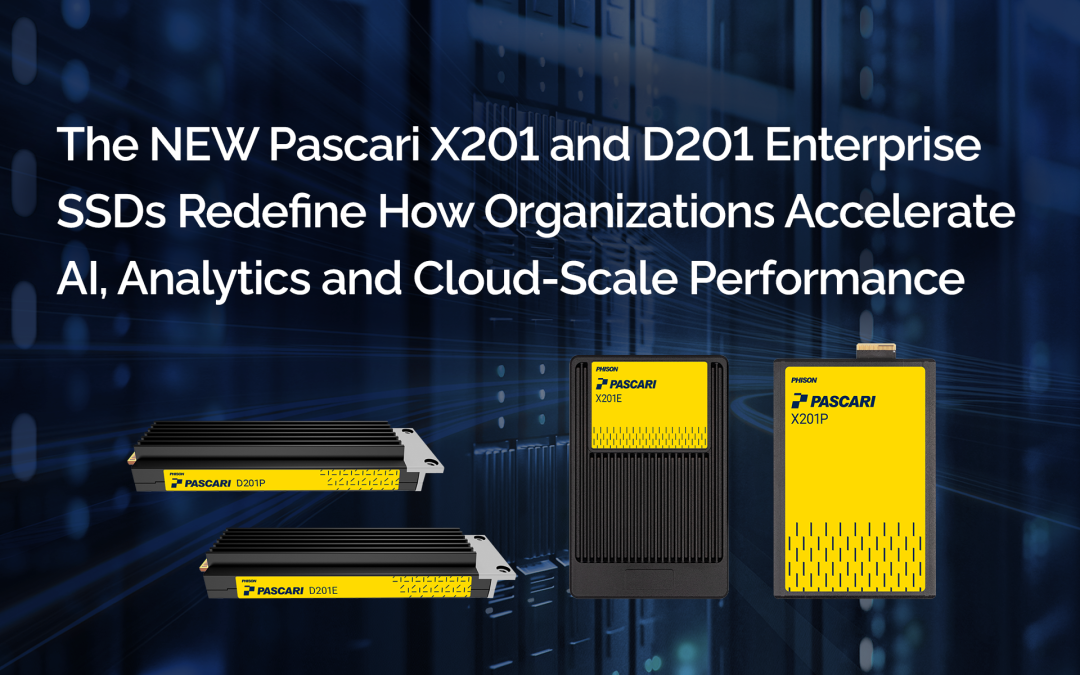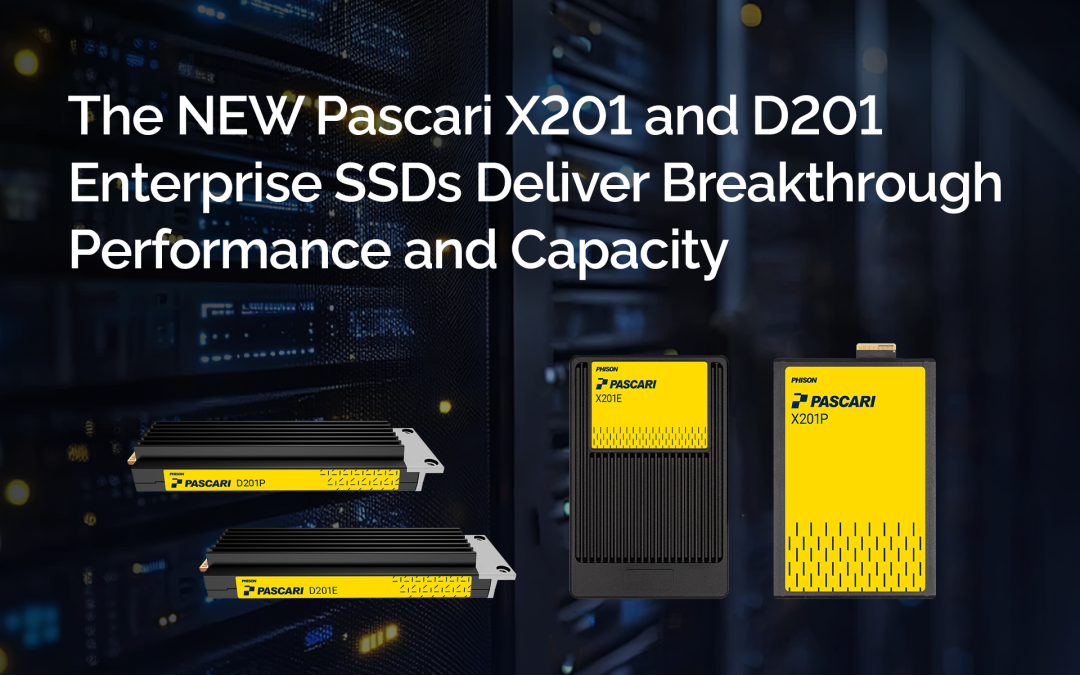In this article, we will reveal the secrets of Tesla. Okay, not really. But the meme above did capture people’s attention on social media recently, and sparked curiosity about what a modern car looks like inside.
Aside from mechanical parts, which haven’t changed radically in the past 20 years, there are automotive electronics. Today’s high-end cars are built with more than a hundred electronic control units (ECUs). ECUs are embedded systems responsible for one or more of a vehicle’s systems or subsystems. There are several types of ECUs, including engine control modules, powertrain control modules, transmission control modules, brake control modules, and more.
Electronic systems provide more operability, efficiency, and performance than the mechanical systems of the past – so the number of ECUs per car has soared. Those hundred-plus ECUs are wired together with sophisticated in-vehicle networking. In premium vehicles, the weight of this electronic and electricity architecture (E/E architecture) could exceed 100kg, more than 200lbs (Figure 2).
As electronic systems increase, so do our bills at the repair shop. But the problems for automakers increase too: increased weight, space constraints, interoperability, complex supply chain management, and cost.
ECU consolidation
The automotive industry has begun to embrace ECU consolidation, in which the E/E architecture is transforming into centralized, unified systems. A car’s sundry small ECUs for various tasks are consolidated into a domain controller, integrating multiple related functions into one hardware platform. Instead of multiple small processors, a domain controller can run multiple tasks on one (higher-end) processor, and it eliminates a great deal of redundant components like wiring and individual power supplies.
Each car can contain several domain controllers responsible for different groups of applications. A current example is the in-car application server (ICAS) used in Volkswagen’s ID series. Advanced Driver Assist Systems (ADAS) require capturing, processing, and analyzing data in the blink of an eye. An ADAS domain controller runs all the ADAS functions like receiving inputs from sensors around the vehicle, sensor fusion processing, making decisions, and generating instructions. Since tight integration is critical in ADAS anyway, deploying all these applications on one domain controller is wise. Infotainment system functions are increasingly consolidated into a domain controller. In modern vehicles, telematics and connectivity may be also managed by a domain controller.
This domain-centralized architecture significantly reduces the number of ECUs and solves some of the problem mentioned above. This trend of consolidation is expected to continue throughout the next decade to 2030 (Figure 3).
Domain controllers need high-density storage
In this move toward greater consolidation, modern vehicle architectures consume greater computing, memory, and storage resources. The ICAS, and any server-like domain controller, needs more storage for its collection of tasks and applications. At the same time, more features are being introduced, and higher-quality features – navigation, multimedia, voice and gesture recognition, biometrics, rear-seat entertainment, heads-up display, instrument clusters, wireless connectivity, and so on.
This change is evident in the evolution and design of infotainment systems. In the traditional infotainment system, the instrument cluster and the head unit each had their own microcontroller units and storage. However, this has changed since the advent of the cockpit domain controller, introduced in 2018 for the newer domain-centralized architecture. Since then, modern vehicles have, and will continue to have, ever more advanced domain controllers (Figure 4).
Cockpit domain controller hardware aims to give drivers a seamless and immersive user experience across several different applications such as music, status display, navigation, voice commands, phone calls, plus all other human-machine interfaces in the infotainment domain. Behind all these systems runs a powerful SoC and high-density storage.
New architecture, new storage standard
As the requirements for computing power soared, some suppliers of SoCs to the smartphone market joined the automotive party. This made a great deal of sense: the performance and processing power of a high-end phone is very similar to what a domain controller needs.
But let’s put it in reverse for a bit. In mobile computing, interfaces between SoCs and storage were evolving from eMMC to the more capable UFS, first brought to market in 2013 by Qualcomm and Toshiba. UFS offered three times the performance of eMMC, so data transfers, multitasking, and loading apps became a breeze, and it quickly became the new standard.
At the same time, SoC makers were developing automotive solutions based on the platforms they were already using for mobile. These SoC players increased their market share, especially in in-vehicle infotainment systems, and helped propagate growth and adoption of UFS in the automotive industry. And higher-performance interfaces need to pair with high-density storage to best support various applications and features. Today, UFS is practically required in automotive electronics, and so are high-quality NAND flash controllers and storage solutions.
As a company that has worked closely with automotive customers for many years, we are witnessing this evolution of automotive E/E architecture in real time, helped them transition from eMMC to UFS
The next phase of vehicle E/E architectures will see higher levels of consolidation, huge amounts of data, high-speed Ethernet backbones, and of course, more powerful server-like hardware systems. That means more requirements for storage density and performance for infotainment systems, autonomous driving, energy efficiency, comfort, and safety.
References used in this article:


